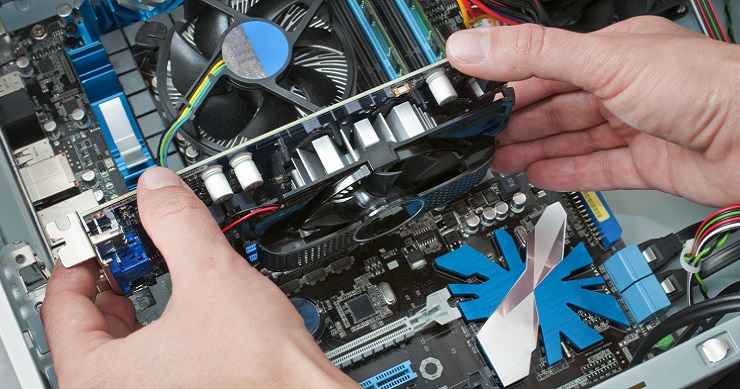When individuals encounter PC problems and seek computer repair, the issue can often be resolved quickly and independently. A common problem is browsing difficulties or a default gateway address starting with “169.254.” The solution to this issue is a simple process known as a “winsock reset,” also referred to as a “comms reinstall,” “restart network interface,” or an “airport reset.” Essentially, this means resetting the network adapter’s software to its default settings. This article provides instructions for performing this reset across various operating systems, including Mac OSX, Windows, and Linux.
Resetting Your Network Adapter in Windows 10
To begin the reset process in Windows 10, locate the magnifying glass icon, also known as the Search button, in the bottom left-hand corner of the screen. Click on it and type “cmd” into the search bar that appears. The “Command Prompt” app should be the top result. Right-click on it and select “Run as administrator.” Users may need to enter an administrator password to proceed, depending on their computer settings.
A black window with white text and a blinking cursor will appear, indicating the Command Prompt. Type “netsh winsock reset” and press the “Enter” key. After the Command Prompt executes the reset, wait for the message “Winsock reset completed successfully” to appear. To complete the process, restart the computer.
Network Adapter Reset in Windows 8
To access the search function in Windows 8, move the cursor to the upper right-hand corner of the screen to bring up the vertical menu bar, then click “Search.” Type “cmd” and press “Enter.” In the search results, right-click on “cmd” and choose “Run as administrator.” Enter the administrator password if prompted. Follow the same steps as described for Windows 10 to complete the winsock reset and restart the computer.
Winsock Reset in Windows 7
In Windows 7, click on the orb in the bottom left-hand corner to open the Start menu. Type “cmd” in the search bar and right-click on “cmd” in the results to run it as an administrator. Enter the required password if necessary. Perform the “netsh winsock reset” command as previously outlined and restart the computer to finalize the changes.
Network Adapter Reset in Windows XP
Click the “Start” button in the bottom left-hand corner of the screen in Windows XP. Select the Search option and type “cmd” in the search bar, then hit “Enter.” Right-click on “cmd” in the results and select “Run as administrator,” providing the password if needed. Execute the “netsh winsock reset” command and restart the computer upon completion.
Resetting Your Network Adapter in Windows Vista
To reset the network adapter in Windows Vista, click on the orb in the bottom left-hand corner to open the Start menu. Navigate to “Control Panel,” then “Network and Internet,” and click on “Network and Sharing Centre.” In the left-hand column, select “Manage Network Connections” and highlight “Local Area Connection” by clicking it once, then click “Diagnose This Connection.” Alternatively, right-click and select “Diagnose.” After the diagnosis, click “Reset the Network Adapter” and restart the computer.
Mac OSX or macOS Airport Reset (Network Adapter Reset)
Note that Mac OSX and macOS do not have Winsock, but they do offer a Network Adapter Reset known as an “Airport Reset.” To perform this reset, click the “Network” icon in the top right-hand corner of the screen and select “Turn Wi-Fi/Airport Off” from the drop-down menu. Wait for 1-2 minutes before repeating the step and selecting “Turn Wi-Fi/Airport On.” Once the Wi-Fi/Airport has restarted, reconnect to the default network and attempt to browse.
Restart Network Interface (Network Adapter Reset) in Linux
Linux, with its various iterations, also allows for a network adapter reset. Open “Command Lines” and disable the eth0 interface by typing “# ifdown eth0.” Reactivate it with “# ifup eth0” and check the IP address information using the command “# ip a show eth0.”

